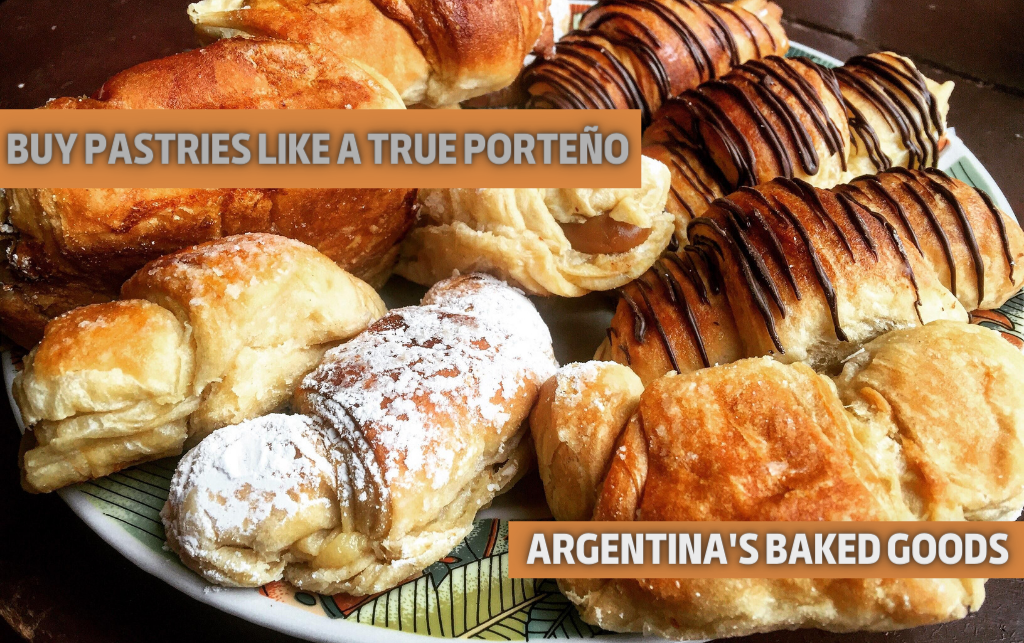Be it for a snack or for afternoon tea (“merienda”), Argentine “facturas” (croissants) are some of the most delicious food options in the country; besides, you can’t go wrong with flour, cream and chocolate.
This guide will have you picking favorites at the boulangerie in no time!
| Spanish Name | North American Equivalent | Description |
|---|---|---|
| Medialunas | Croissants | Buttery or crispy, akin to croissants but sweeter, a breakfast staple. |
| Vigilantes | Puff Pastry Twists | Long, sugar-glazed puff pastry sticks, perfect with coffee. |
| Cañoncitos de Dulce de Leche | Dulce de Leche Horns | Horn-shaped pastries generously filled with dulce de leche. |
| Bolas de Fraile | Custard-Filled Doughnuts | Round, doughnut-like pastries filled with custard or dulce de leche. |
| Palmeras | Elephant Ears / Palmiers | Heart-shaped, puff pastry cookies coated in sugar for a crisp finish. |
| Miguelitos | Layered Dulce de Leche Pastry | Flaky layers of pastry with a dulce de leche filling, powdered sugar on top. |
| Sacramento | Braided Sugar Pastry | Sweet, braided pastry, often glazed with sugar for extra sweetness. |
| Facturas de Crema Pastelera | Custard Cream Pastries | Pastry shells filled with a smooth, rich custard cream. |
| Churros | Churros | Fried dough pastries, often filled or dipped in dulce de leche. |
| Crescentes | Sweet Rolls | Similar to medialunas but larger, with sweet toppings like pastry cream. |
| Tortitas Negras | Caramelized Sugar Pastries | Small, round pastries topped with a crunchy caramelized sugar layer. |
| Facturas con Membrillo | Quince Jelly Pastries | Pastries filled or topped with sweet quince jelly. |
| Pepas | Jam Thumbprint Cookies | Shortbread cookies with a thumbprint of jam, often quince or sweet potato. |
| Alfajores de Maicena | Dulce de Leche Sandwich Cookies | Cornstarch cookies sandwiching dulce de leche, rolled in coconut. |
| Rosquitas | Sugar-coated Donut Rings | Small, sweet donut rings, often coated in sugar, perfect as a light snack. |
| Berlinas | Filled Doughnuts | Plump, yeast doughnuts filled with jam or dulce de leche, dusted with sugar. |
How to Buy Bread Like a Porteño
There is no denying that facturas, or croissants, are a way of life for many locals here in Buenos Aires. Flakey, buttery, sometimes gooey, and always delicious. People buy facturas by the dozen from their local panaderías (bakeries) to enjoy as part of the typical breakfast and merienda (tea time) ritual. Alongside coffee and mate, they are also a crucial component of the mid-afternoon merienda break.
You might not have known then that some factura names have very interesting backstories. Here, we will explore the origins of these names, and by the end of this blog you will be navigating the panadería like a true porteño!
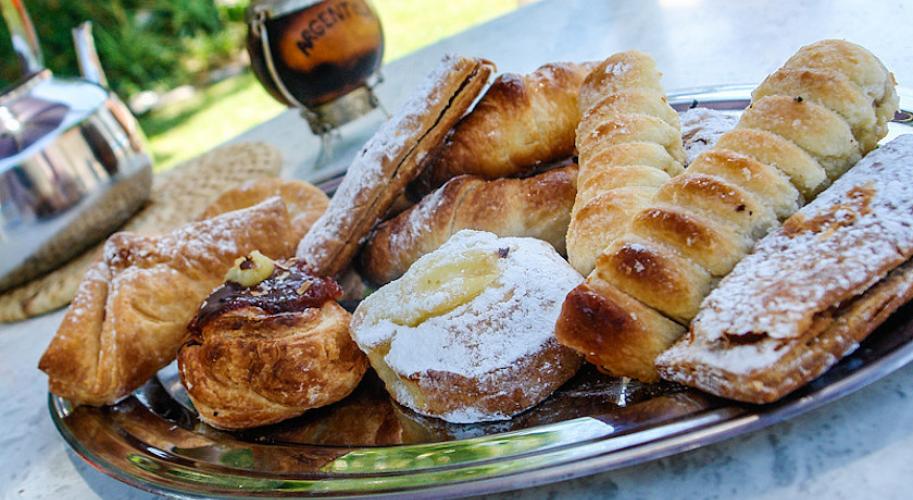
A Short History of Facturas
The word “factura” has its roots in the latin word ‘facere’–which means (the action of) doing, making or creating. This could be related to the idea that facturas are the result and end-product of a baker’s craft, which is a nice thought. Around 1888, there was an anarchist movement spreading amongst many worker unions in Argentina. Led by Errico Ferrer, the syndicate of los panaderos organized a strike that lasted almost two weeks. Obviously this wasn’t met with alacrity by the authorities of the time, but the bakers’ trade union found an ingenious way to fight back. They came up with new names for their facturas, having sacrilegious and mocking references to their enemy institutions.
Some of the names of facturas are logical and self-descriptive, but still very charming. The iconic ‘medialuna’ for example, takes its name from the shape of the crescent moon. ‘Libritos’ are so-called as they have layers of pastry which resemble the pages of little books! Another example is the humble ‘Pancito de Leche’, a straightforward translation could be “little milk bun”.
Many pastries were brought to Argentina along with immigration from Europe. Over time, they morphed into the facturas we know today under Latin-American influence. As such, they are often said to be distant cousins of the well-known Danish Pastries. ‘Churros’ are a popular treat from Spain. ‘Mil le-feuilles’ from France are called ‘milhojas’ in Buenos Aires, and of course now contain copious amounts of dulce de leche. ‘Bolas de fraile’ are derived from the German ‘Berliner Pfannkuchen’, and that may be the reason why some people still call them ‘Berlinesas’.
All the Types of Facturas: What to Buy
Argentine facturas come in all different shapes and sizes, often filled with dulce de leche, quince paste (dulce de membrillo) or custard (crema pastelera), and, of course, also come sprinkled with lots and lots of sugar. Each has their own unique name and knowing all of them can be very useful. Especially if you don’t want to find yourself being that foreigner who, when standing at the counter, can only point to try and get their factura fix. Here are all–or almost all–of the types of facturas:
- Cañoncitos de dulce de leche: the cañoncitos are a classic for the sweet-toothed. It’s made with Philo dough and filled with delicious dulce de leche–a typical version of Argentine caramel.
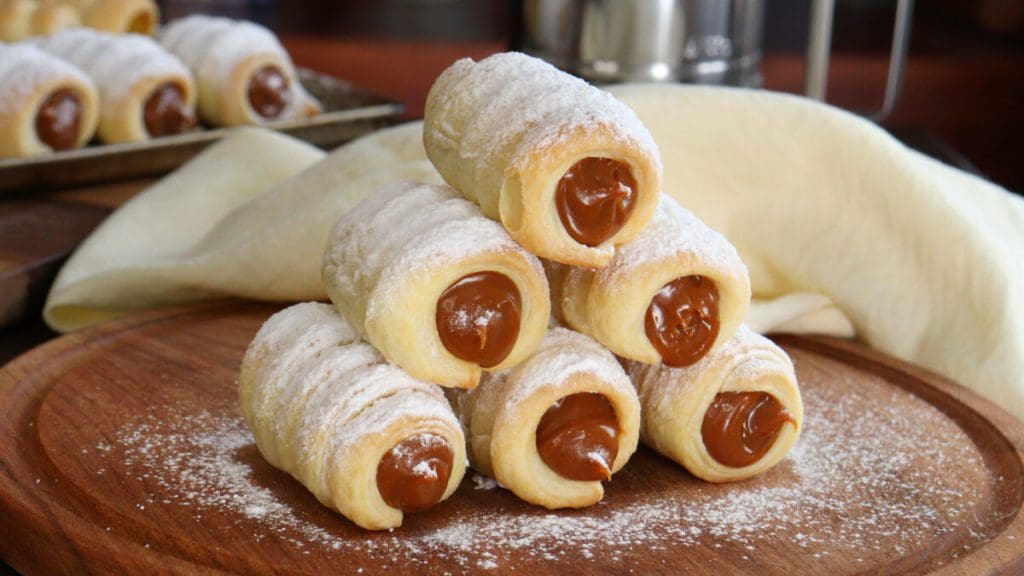
- Libritos: Libritos are also made out of Philo dough, but the difference between cañoncitos is their characteristic shape (“librito” means “small book”), folded in half, with the Philo layers that look like sheets of paper stacked together. Another difference is that libritos are made out of a layering of fat and flour dough.
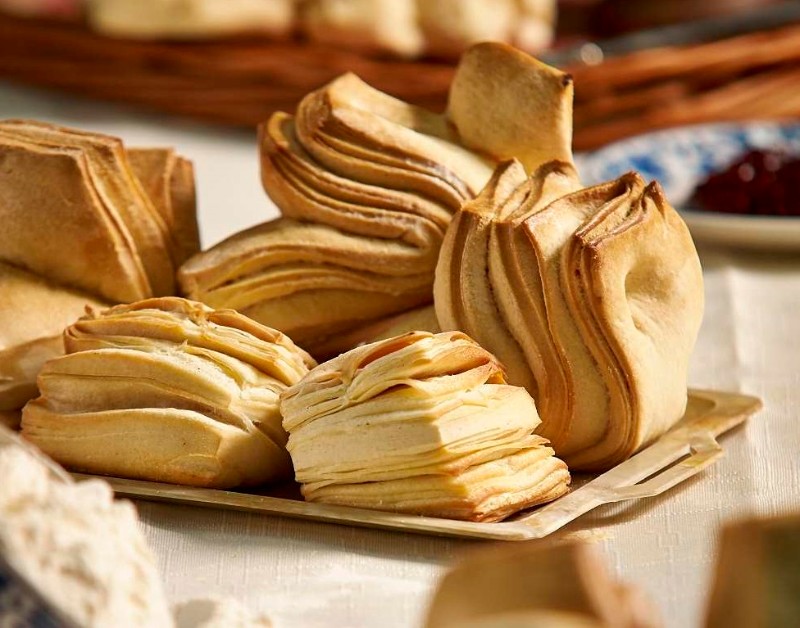
- Bolas de fraile: Also called “Berliner” or “Berlinesa”, the bolas de fraile are originally from central Europe, but the recipe was adapted to Argentina and is now one of the staples of boulangeries. They are made with risen dough balls and filled on the inside or sideways either with dulce de leche or “crema pastelera” (an egg-and-sugar-based filling).
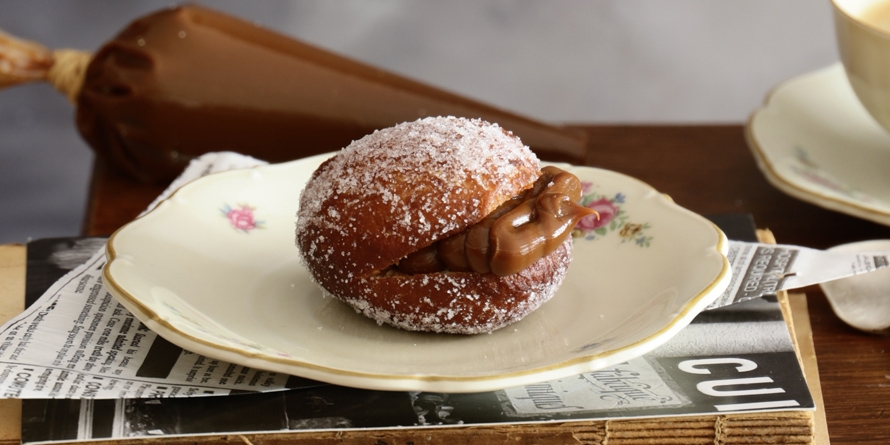
- Tortita negra: Tortita negras are an Argentine pastry, made exclusively in Argentina. You’re thinking: maybe the name is a bit racist (“black cake”) and you wouldn’t be mistaken. Still, do not let that stop you from trying out these pastries: a round, risen dough–with can be tough–with lots of black sugar on top.
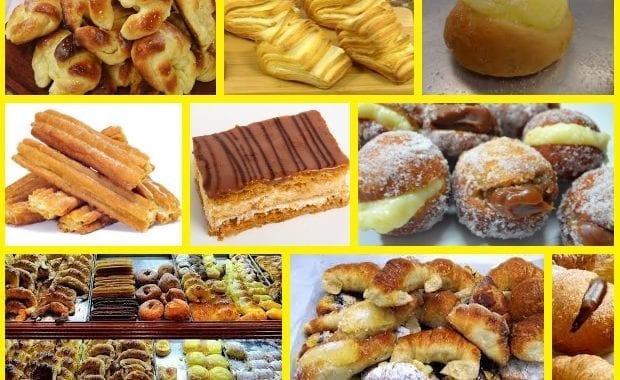
- Churros: The Argentine Churro pastries are an adaptation of the classic churros you can get in Portugal, so you’re probably familiar with them. Deep-fried dough that is coated in sugar after cooking, with it’s typical ridges. In Argentina, however, it can be filled with dulce de leche or crema pastelera. We recommend trying these with some hot chocolate.
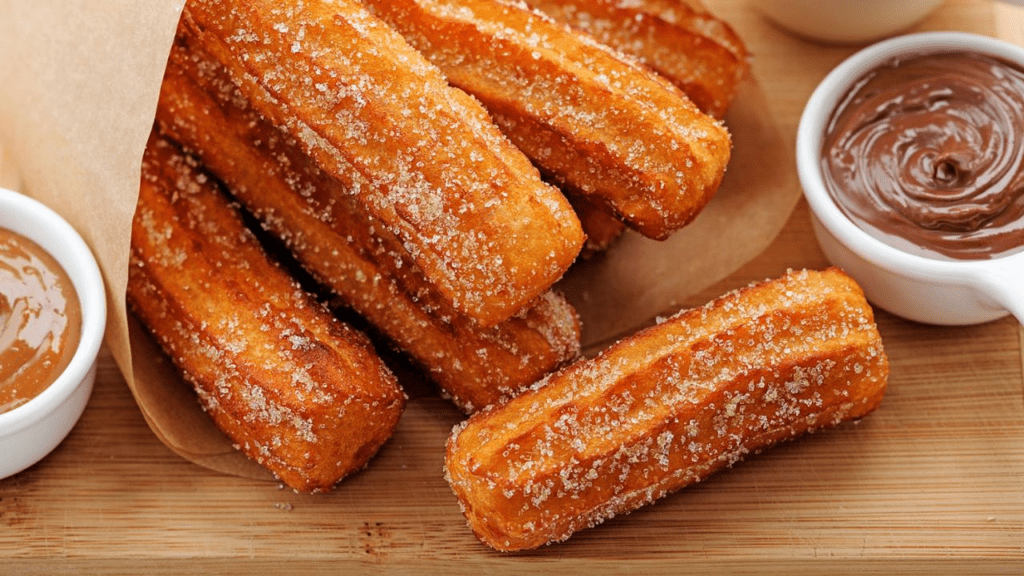
- Sacramento: The sacramento can get mixed up with a vigilante (described below) because of its stretched-out shape. However, unlike the vigilante, sacramentos never feature toppings, which is also a characteristic of Argentine pastries. It differs from the medialuna classic as it doesn’t have twisted ends.
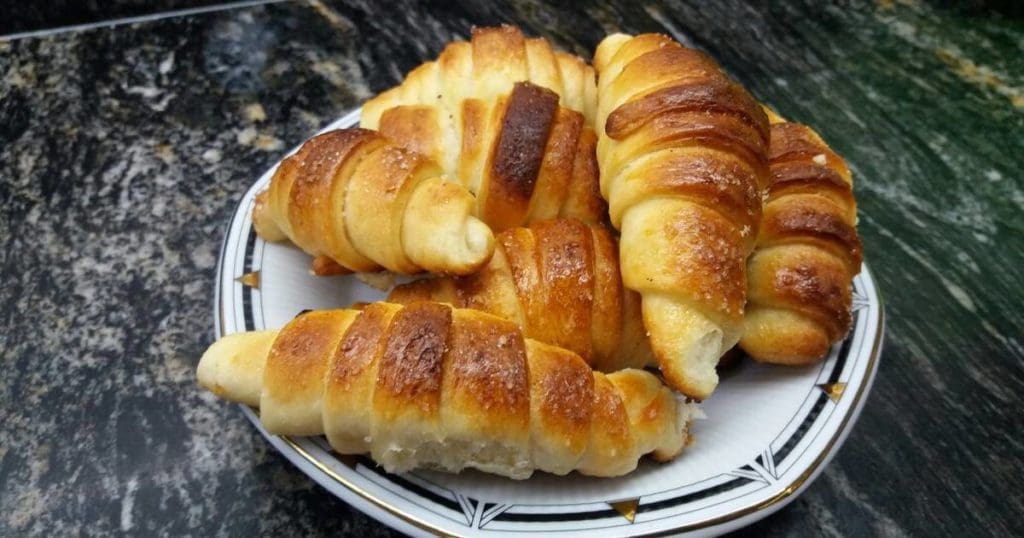
- Vigilante: Between you and me, the vigilante is much tastier than a sacramento, as the sacramento tends to be drier. Both are butter-based, though (dough? get it?). This variant does have toppings: membrillo, dulce de leche or crema pastelera.
Speaking of which: dulce de membrillo; a filling or topping all of its own, most often featured in the pasta frola. It’s a classic, quince jelly. It’s made by boiling quince for a long time and adding a lot of sugar–really, a lot. The jelly can also be cut up into pieces, because it’s pretty solid.
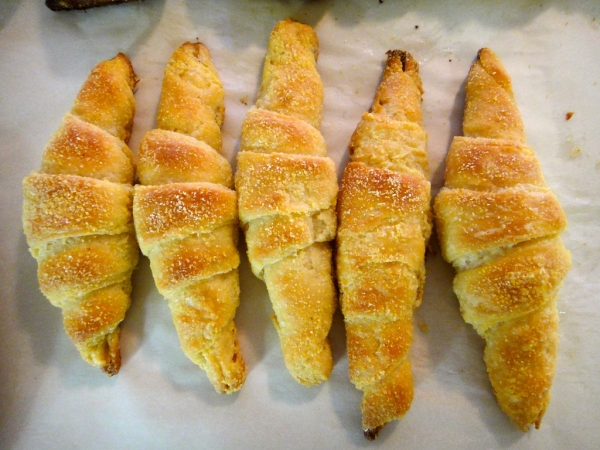
Also read: Guide to dulce de leche
- Bomba (de crema): Similar to the bola de fraile, the bomba de crema has whipped cream on the outside, which is what really makes the difference in this case. Think of a twinkie, but better: homemade.
- Medialuna: Made with fat or with butter, (“de manteca” or “de grasa”, if you plan on ordering), medialunas are a breakfast, tea and breakfast staple in the average Argentine’s diet: they’re practically everywhere. So ubiquitous, in fact, some bakeries only sell these types of croissants. But the medialuna is different than a croissant, in that it’s smaller and the dough is less flaky, more compact. The “medialuna de grasa” is thinner, made with animal fat and with a more salty taste. The “medialuna de manteca” is the opposite: fatty, made with butter and risen many times, and covered in a sticky sugar glazing. Making medialunas is very time-consuming, but rewarding nonetheless.
- Nuditos: The nuditos are a salty exception to the sweet rules of pastries here in Argentina. Nuditos means “knots”, and they are named after their knotted shape–obviously. These are not so well known, but you can get them in a baggie instead of by the dozen or half-dozen.
Other Traditional Bakery Sweets
These bakery sweets are not sold by the dozen; they come in a different packaging and size: some are sold in plastic baggies, sealed for freshness. Some are sold in small carton trays (painted a beautiful golden color). These bakery specials–in particular, the “masitas finas”–can be more costly if they’re really good quality.
- Alfajores de maicena: Alfajores de maicena are made with cornstarch dough, and therefore can be eaten by gluten-intolerant people. They have a dulce de leche filling, and are rolled in shredded coconut. Delicious. Some supermarkets sell the “tapitas” (lids of the alfajor), but homemade or bought at a bakery is always a better idea, of course.
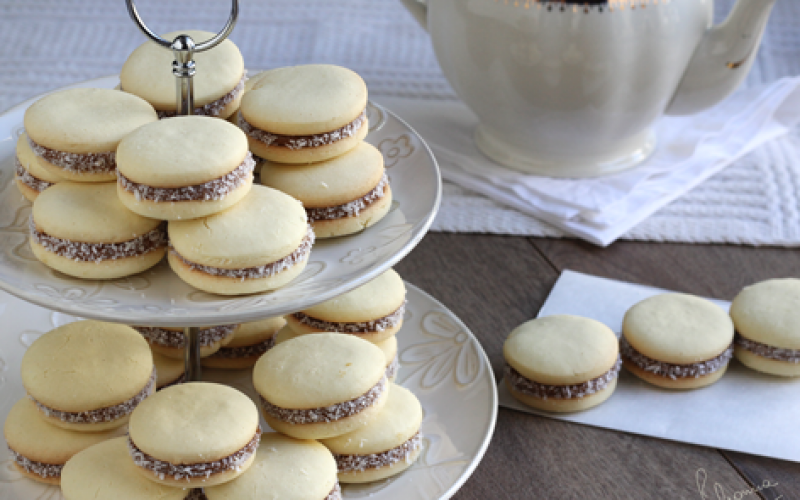
- Masitas finas: These pastries are the star of the show. If you bring these to a gathering for tea, you’re bound to impress your hosts. Masitas come in almost any variety you can imagine, but in a much smaller format. From chocolate ganache to nut toppings to coconut drops and mini alfajores. Most of the masitas are butter-based: they crumble in your mouth. They are sort of a summary of all the pastries ever made!

- Pepas: Pepas are basically made with quince; they’re butter-based cookies with a round hole in them where the quince jelly goes. These are perhaps the most commercial cookies of them all (typical “galletitas” here in Argentina), and are sold in all supermarkets and big kiosks.
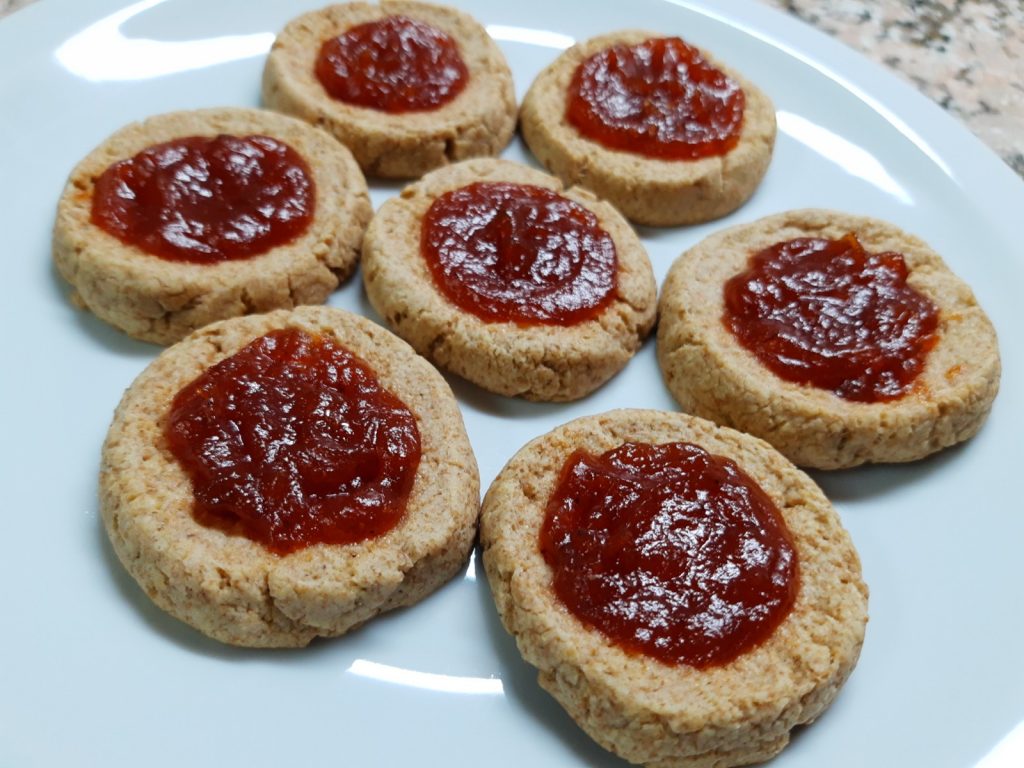
- Pasta frola (filled with membrillo or sweet-potato jelly): Pasta frola is a striped-top cake made with dulce de membrillo (quince jelly, as we’ve said) or sweet potato jam filling. Argentines can get into a very heated argument as to which is better: quince or sweet potato. Who wins? Remember that, as with other traditional pastries, the pasta frola or sweet potato cake are not very fancy and therefore quite easy to make with little to no resources!
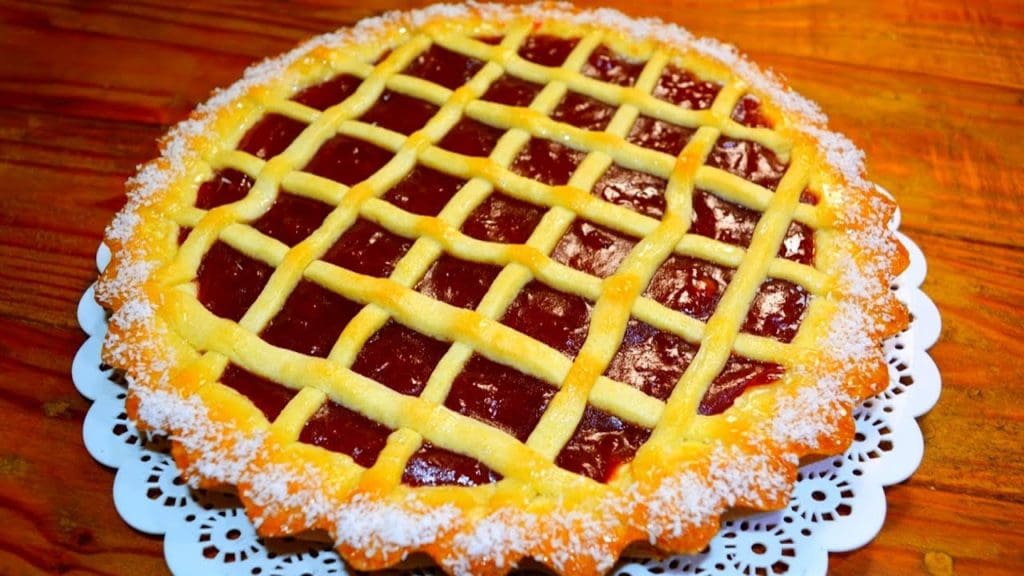
The Best Places in Buenos Aires to Get Facturas (and some tips for Argentina!)
You should take into account that most panaderías in Buenos Aires are closed during the typical “siesta time”. Don’t expect absolutely anything to be open from 3 to 5 PM. Also, you can order by the dozen or by the half-dozen; however, it’s cheaper in comparison to get a half dozen.
You can also get many more things at Argentine bakeries, like empanadas or quiches (tartas), and also many types of pound cake! In Buenos Aires, because of the sheer size of the city, you can get pastries at commercial franchises like Buenos Aires Bakery, Las Medialunas del Abuelo and Costumbres Argentinas, for a cheaper fix.
Reina del parque (Mar del Plata)
Address: Av. Tejedor 598
Panadería Boulan
Address: Sinclair 3196
Panadería L’ Epi (Buenos Aires)
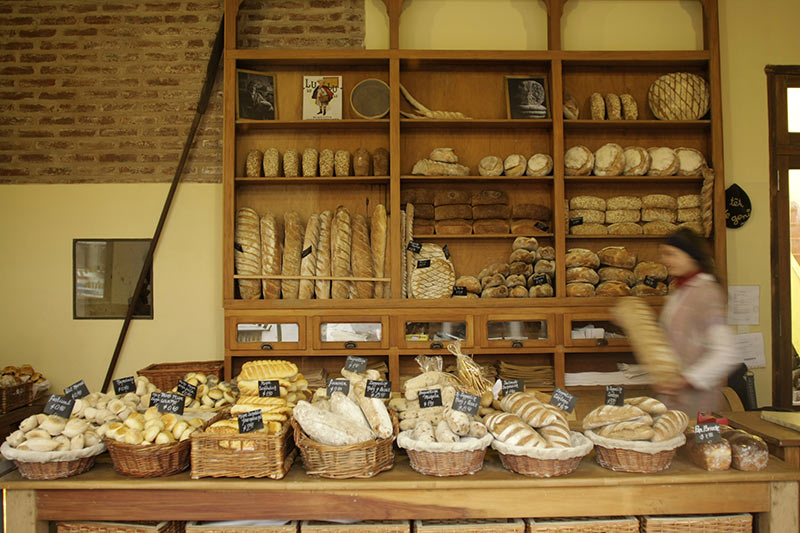
Adress: Juncal 2769 | Montevideo 1567 | Roseti 1769
Panadería Oui Oui (Buenos Aires)
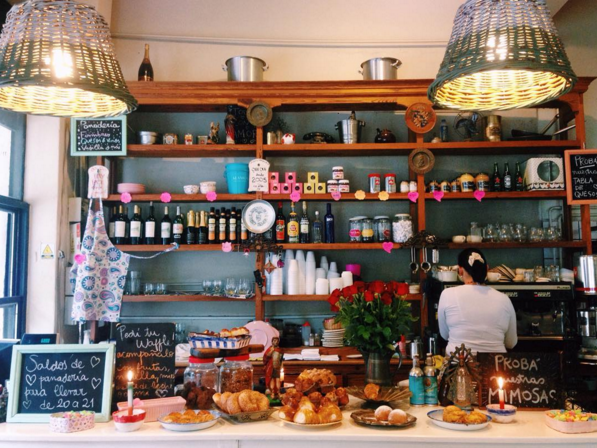
Address: Nicaragua 6099
Panadería Co-Pain (Buenos Aires)
Address: Juan B. Ambrosetti 901
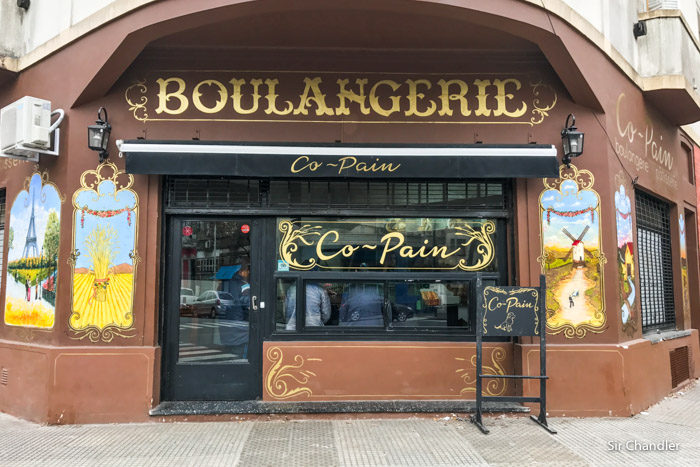
Domani (Buenos Aires)
Address: Jerónimo Salguero 3000
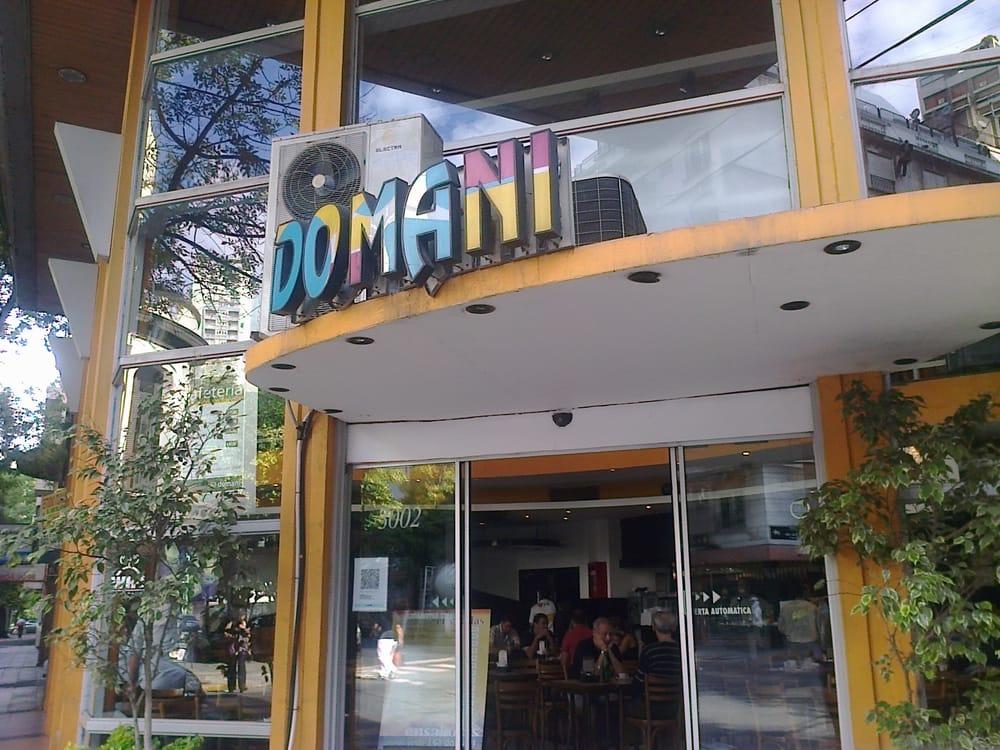
Do you know of any other curious culinary histories? Let us know in the discussion below! For more information about Vamos Spanish Academy come see us at Viamonte 1516, Buenos Aires, Argentina or contact us https://vamospanish.com [email protected] +5411-5984-2201 +1-888-8081242




